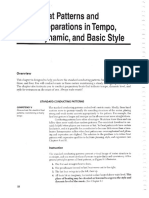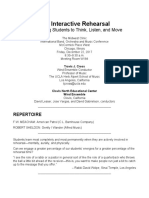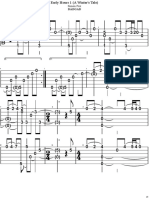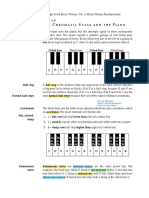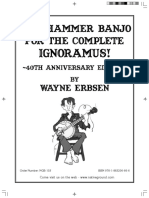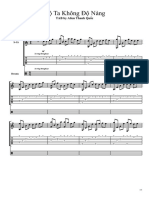100% found this document useful (1 vote)
834 views4 pagesString Technique For Conductor
Conducting technique can be improved by drawing on knowledge from playing a string instrument.
Specifically, conducting involves showing accurate dynamics, articulations, and tempo/section changes with the baton. This is similar to controlling the bow to produce tone and nuance. Just as bow technique is developed through exercises, conductors can practice patterns within limits like a small hoop to improve clarity. Breaking challenges like tempo changes into basic elements and rebuilding layer-by-layer mirrors effective string practice routines. Understanding parallels between bow strokes and beat preparations/ictuses allows conductors to communicate musically like string players.
Uploaded by
Dolhathai IntawongCopyright
© © All Rights Reserved
We take content rights seriously. If you suspect this is your content, claim it here.
Available Formats
Download as PDF, TXT or read online on Scribd
100% found this document useful (1 vote)
834 views4 pagesString Technique For Conductor
Conducting technique can be improved by drawing on knowledge from playing a string instrument.
Specifically, conducting involves showing accurate dynamics, articulations, and tempo/section changes with the baton. This is similar to controlling the bow to produce tone and nuance. Just as bow technique is developed through exercises, conductors can practice patterns within limits like a small hoop to improve clarity. Breaking challenges like tempo changes into basic elements and rebuilding layer-by-layer mirrors effective string practice routines. Understanding parallels between bow strokes and beat preparations/ictuses allows conductors to communicate musically like string players.
Uploaded by
Dolhathai IntawongCopyright
© © All Rights Reserved
We take content rights seriously. If you suspect this is your content, claim it here.
Available Formats
Download as PDF, TXT or read online on Scribd
/ 4

























































